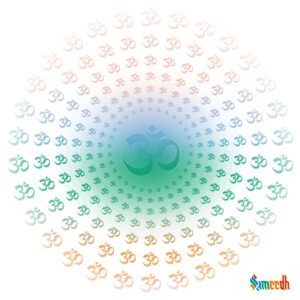Hinduism has a vast and diverse body of sacred texts, including scriptures, philosophical treatises, epics, and more. The primary scriptures are broadly categorized into two main groups: Shruti and Smriti.

1. Shruti (Heard or Revealed Texts):
- Vedas: These are the oldest and most authoritative scriptures. There are four Vedas—Rigved, Samaved, Yajurved, and Atharvaved. Each Veda consists of Samhitas (hymns), Brahmanas (rituals), Aranyakas (meditations), and Upanishads (philosophical teachings).
- Upanishads: These texts explore the philosophical aspects of the Vedas and discuss concepts like Brahman (universal soul) and Atman (individual soul). The Upanishads are considered the culmination of Vedic thought.
2. Smriti (Remembered Texts):
- Itihasas: These are epic narratives that include the Ramayan and the Mahabharat.
- Ramayan: Authored by Valmiki, it narrates the life and adventures of Lord Ram.
- Mahabharat: Composed by Vyasa, it contains the Bhagavad Gita and is the longest epic poem in the world. It explores various aspects of dharm (duty) and includes the story of the Kurukshetra War.
- Puranas: These are a genre of texts that contain myths, legends, cosmology, and genealogies. There are 18 major Puranas, including the Vishnu Purana, Shiv Purana, and Devi Bhagavata Purana.
- Dharma Shastras: Texts like Manusmriti provide guidelines for ethical and legal conduct, social duties, and righteous living.
- Agamas and Tantras: These texts focus on rituals, temple construction, worship, and spiritual practices. They are particularly important in certain sects like Shaivism, Shaktism, and Vaishnavism.
- Smritis: Various texts, like the Manusmriti and the Dharmashastra, fall into this category. They provide guidelines for social conduct, law, and morality.
- Darshanas: These are philosophical treatises that systematize and explain different aspects of Hindu philosophy. The six classical darshanas are Nyaya, Vaisheshika, Samkhya, Yoga, Mimamsa, and Vedanta.
- Bhakti Sutras: These are texts focusing on the devotional path, emphasizing love and devotion to a personal deity. The Bhakti Sutras of Narada and the Bhakti Rasamrita Sindhu of Rupa Goswami are examples.
- Smritis of Saints: Texts like the works of various saints, including Tulsidas, Surdas, Kabir, and others, are also considered significant.
It’s important to note that within these broad categories, there are numerous texts, commentaries, and regional variations. Additionally, texts may be considered more authoritative in specific sects or philosophical traditions within Hinduism.